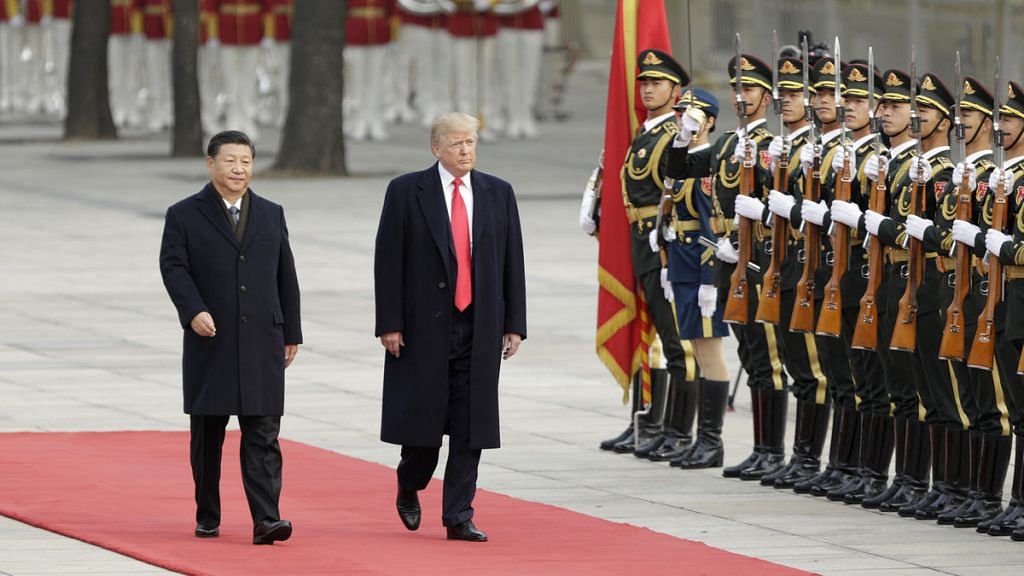New Delhi: The coronavirus pandemic is shaking the global strategic order at the highest level. Since the Cold War ended, the big powers have cooperated during crises. But now, the virus has put U.S. and China in a face off like nothing else could have.
At President Donald Trump’s press conference Wednesday, he continued to refer to the coronavirus as a Chinese virus. When a reporter asked if he thought the term was racist, Trump claimed the virus originated from China, so there was nothing wrong in calling it a “China virus”.
Another reporter, Weija Jiang, told Trump that one of the White House officials had referred to the virus as “kung-flu” and asked whether this term was racist. To this, Trump again said the virus has come from China, so it must be called the “China virus”.
This morning a White House official referred to #Coronavirus as the “Kung-Flu” to my face. Makes me wonder what they’re calling it behind my back.
— Weijia Jiang (@weijia) March 17, 2020
To understand why Trump is reiterating this claim, one must look at the background.
China had alleged that the virus may have been brought to Wuhan by US forces during the World Military Games held in the Chinese city last year. Trump is simply rebutting the charge by repeatedly calling it the “China virus”.
While both sides are blaming each other over the origin of the virus, the fact remains that it originated in the wet markets of Wuhan where it jumped from bats to pangolins.
Where Trump has merit is in blaming China’s initial response to the outbreak.
It seems that in the initial stages, China tried to bury the problem. It has been reported that experts discovered the virus by late December but authorities in China asked for destruction of the coronavirus samples.
People in Wuhan were clueless about the outbreak when it began spreading. On 20 January, Wuhan had even hosted a potluck banquet with 40,000 families to apply for a world record.
If China was more transparent about the virus, up to 95 per cent of the cases could have been prevented.
Also read: How Trump, Johnson response shows sensible conversations on coronavirus have finally begun
Media caught in crossfire
Walter Russell Mead, a renowned scholar in foreign affairs, wrote an article in The Wall Street Journal (WSJ) with the title ‘China is the real sick man of Asia’.
The term ‘sick man’ was initially used for the Ottoman empire which was lagging behind when the rest of Europe was rapidly developing. However, the term sick man of Asia was later used for China when parts of it were colonised by Japan and Britain.
The article drew very strong reactions. China expelled some of WSJ reporters from the country. The U.S. then retaliated by ordering four Chinese state-run media outlets to dismiss 40 per cent of their staff working in America.
On Tuesday, China announced that it would expel American journalists working for The New York Times, WSJ and The Washington Post. Journalists expelled from China will not be able to work from Hong Kong as well.
This is the first pandemic in a truly globalised world. When the U.S. and China should be working together, they are in the most bitter tussle since 1989 when the Tiananmen Square massacre took place.
Also read: China’s love for wildlife meat to its authoritarianism — how coronavirus got out of hand
You can watch the full episode here:
